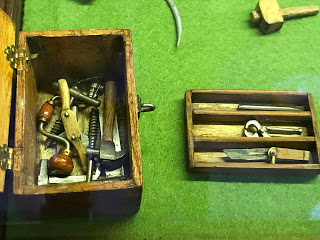1. Mosaics
I have always been fascinated by mosaics. I had “Mini Mosaic” as a child, fun to make the mosaics but a terrible challenge to prise the little tiles out of the baseboard afterwards, and then more recently Guy Gavriel Kay’s “Sailing to Sarantium” brought the world of mosaic-making alive. So I tried visiting St Petka’s chapel in Belgrade but was thwarted by a christening, and instead I dragged Sid off to the Karriye/Chora church here in Istanbul. Not only are the Serbs irritatingly religious, the Turks are irritatingly interested in preserving monuments (as well as upgrading and resurfacing all their roads, honestly some people have no sense of timing, why didn’t they do all this last year before we visited). Anyway 2/3rds of the church was open and it was fab, especially once we’d waited for two tour groups to leave.
The mosaics are extraordinarily detailed – like paintings, the brush strokes/tile sizes get smaller as the artist gets towards important bits like faces and hands. And the colour and detail doesn’t fade over the years unless of course some bits fall out or some idiot plasters over the top of the mosaic. The more you look at them, the closer you feel to the artist who made them.
2. Other museums
Sid has blogged separately about the Rahmi Koc museum which was fascinating but sort of overwhelming. Let me show you three pictures to try to explain this:
 Here is one small part of Gallery 14, and there are lots more than 14 galleries. This gallery is about horse-drawn transport. In the far distance on the right hand side you can see the arched canvas of a “prarie schooner” covered wagon.
Here is one small part of Gallery 14, and there are lots more than 14 galleries. This gallery is about horse-drawn transport. In the far distance on the right hand side you can see the arched canvas of a “prarie schooner” covered wagon.


Here is the wagon closer up, and behind it you can see a glass display case with a brilliantly detailed model of a wagon too. At the front end of the glass case, if you look closely you can see a model of a tool box.
Here is the toolbox, the whole thing is maybe 2.5″ by 1.5″. I was fascinated by the detail of the hand drill, the pliers, the hammer. The tray on the right fits in to the top of the box on the left.
And this level of micro-detail is repeated across the whole of this huge museum, which has recently taken on another 14 buildings because it has run out of space.
So in some odd way I found this museum a bit unsatisfactory, it had an extraordinary number of Things but it lacked some sort of story.
The one story it did have was about Hadley’s Harem, a US bomber which crashed into the sea. I hope the words are readable, please comment if they’re not and I will post a higher-res version. The exhibit included pictures of the local chap who dragged the survivors out of the sea, pictures of the crew then and in later life and as much of the airplane as they could piece back together. Fascinating.


Today I ended up in the Museum of Innocence, which was set up by Orhan Pamuk to illustrate his book of the same name. The museum itself is a bit weird and will only really appeal to people who have read the book, but in it he reflects on what the purpose of a small personal museum should be when there are so many great art museums. What are you really trying to do with your particular museum, and his view is that a museum should turn objects into a story. Which is maybe why I often end up posting photos of people from museums, rather than the objects themselves. And might also explain why I found the Rahmi Koc museum strangely unsatisfying, apart from the bomber exhibit.
